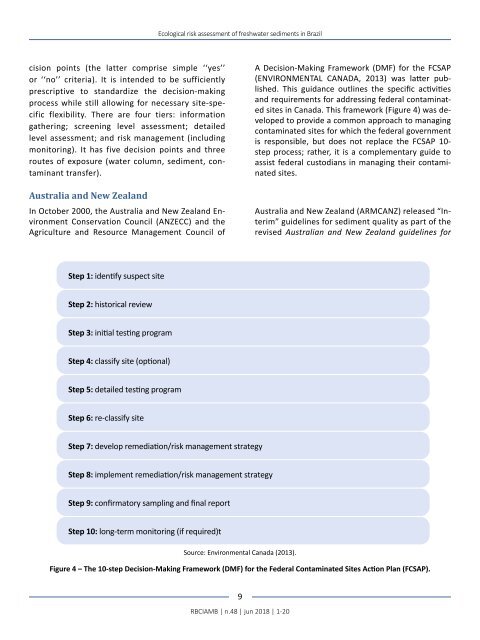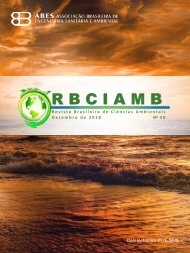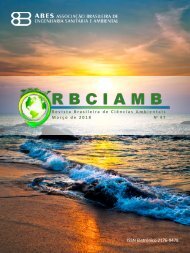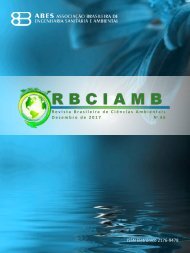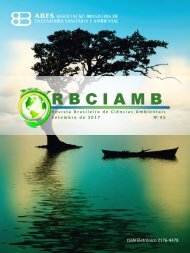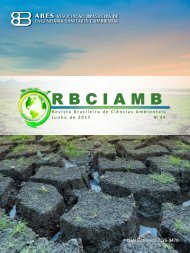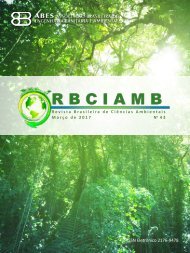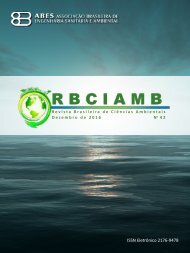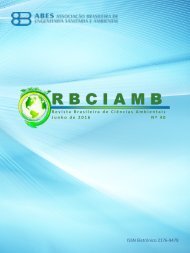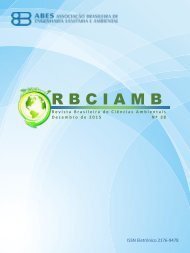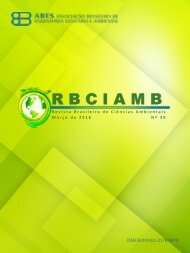Edição 48 RBCIAMB
Create successful ePaper yourself
Turn your PDF publications into a flip-book with our unique Google optimized e-Paper software.
Ecological risk assessment of freshwater sediments in Brazil<br />
cision points (the latter comprise simple ‘‘yes’’<br />
or ‘‘no’’ criteria). It is intended to be sufficiently<br />
prescriptive to standardize the decision-making<br />
process while still allowing for necessary site-specific<br />
flexibility. There are four tiers: information<br />
gathering; screening level assessment; detailed<br />
level assessment; and risk management (including<br />
monitoring). It has five decision points and three<br />
routes of exposure (water column, sediment, contaminant<br />
transfer).<br />
Australia and New Zealand<br />
In October 2000, the Australia and New Zealand Environment<br />
Conservation Council (ANZECC) and the<br />
Agriculture and Resource Management Council of<br />
A Decision‐Making Framework (DMF) for the FCSAP<br />
(ENVIRONMENTAL CANADA, 2013) was latter published.<br />
This guidance outlines the specific activities<br />
and requirements for addressing federal contaminated<br />
sites in Canada. This framework (Figure 4) was developed<br />
to provide a common approach to managing<br />
contaminated sites for which the federal government<br />
is responsible, but does not replace the FCSAP 10‐<br />
step process; rather, it is a complementary guide to<br />
assist federal custodians in managing their contaminated<br />
sites.<br />
Australia and New Zealand (ARMCANZ) released “Interim”<br />
guidelines for sediment quality as part of the<br />
revised Australian and New Zealand guidelines for<br />
Step 1: identify suspect site<br />
Step 2: historical review<br />
Step 3: initial testing program<br />
Step 4: classify site (optional)<br />
Step 5: detailed testing program<br />
Step 6: re-classify site<br />
Step 7: develop remediation/risk management strategy<br />
Step 8: implement remediation/risk management strategy<br />
Step 9: confirmatory sampling and final report<br />
Step 10: long-term monitoring (if required)t<br />
Source: Environmental Canada (2013).<br />
Figure 4 – The 10-step Decision‐Making Framework (DMF) for the Federal Contaminated Sites Action Plan (FCSAP).<br />
9<br />
<strong>RBCIAMB</strong> | n.<strong>48</strong> | jun 2018 | 1-20


